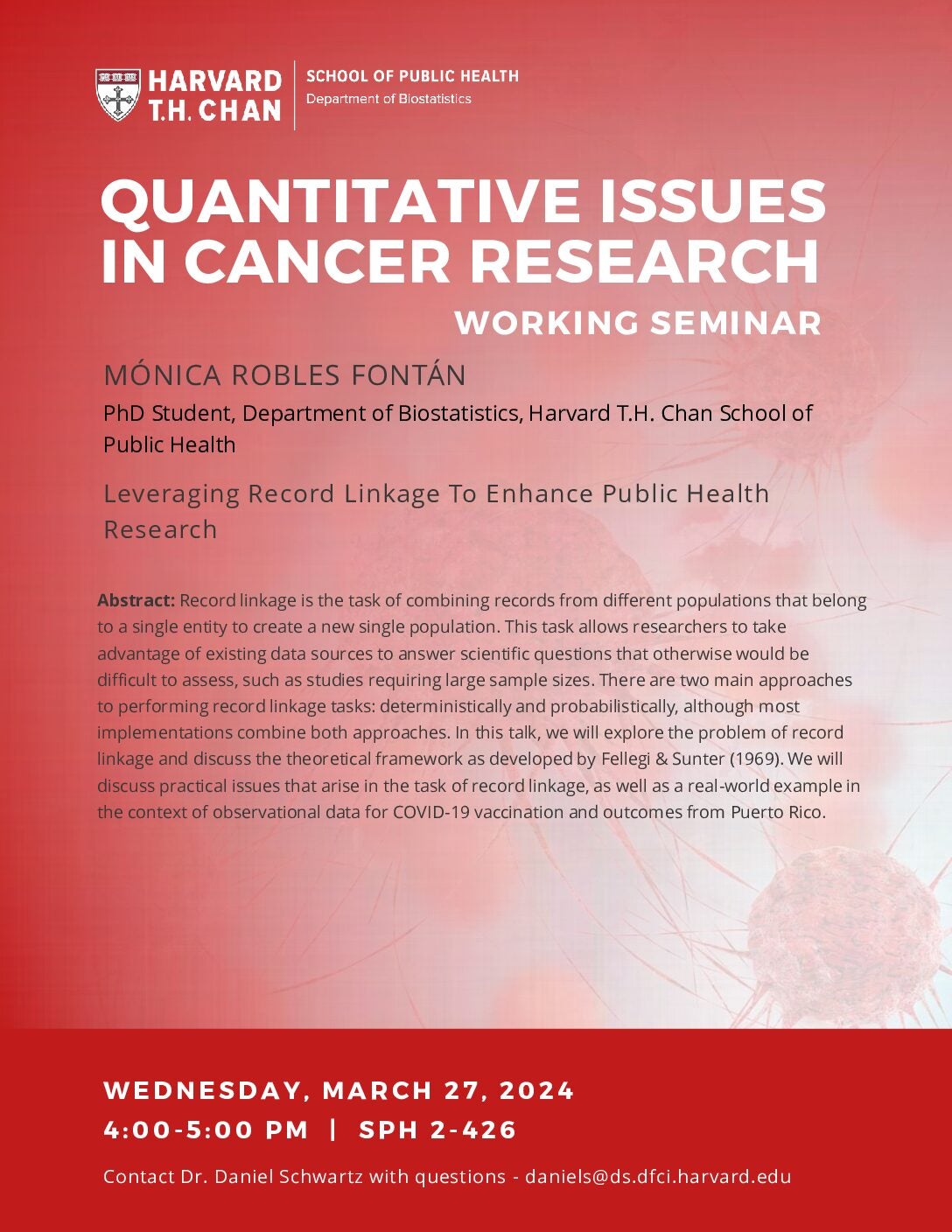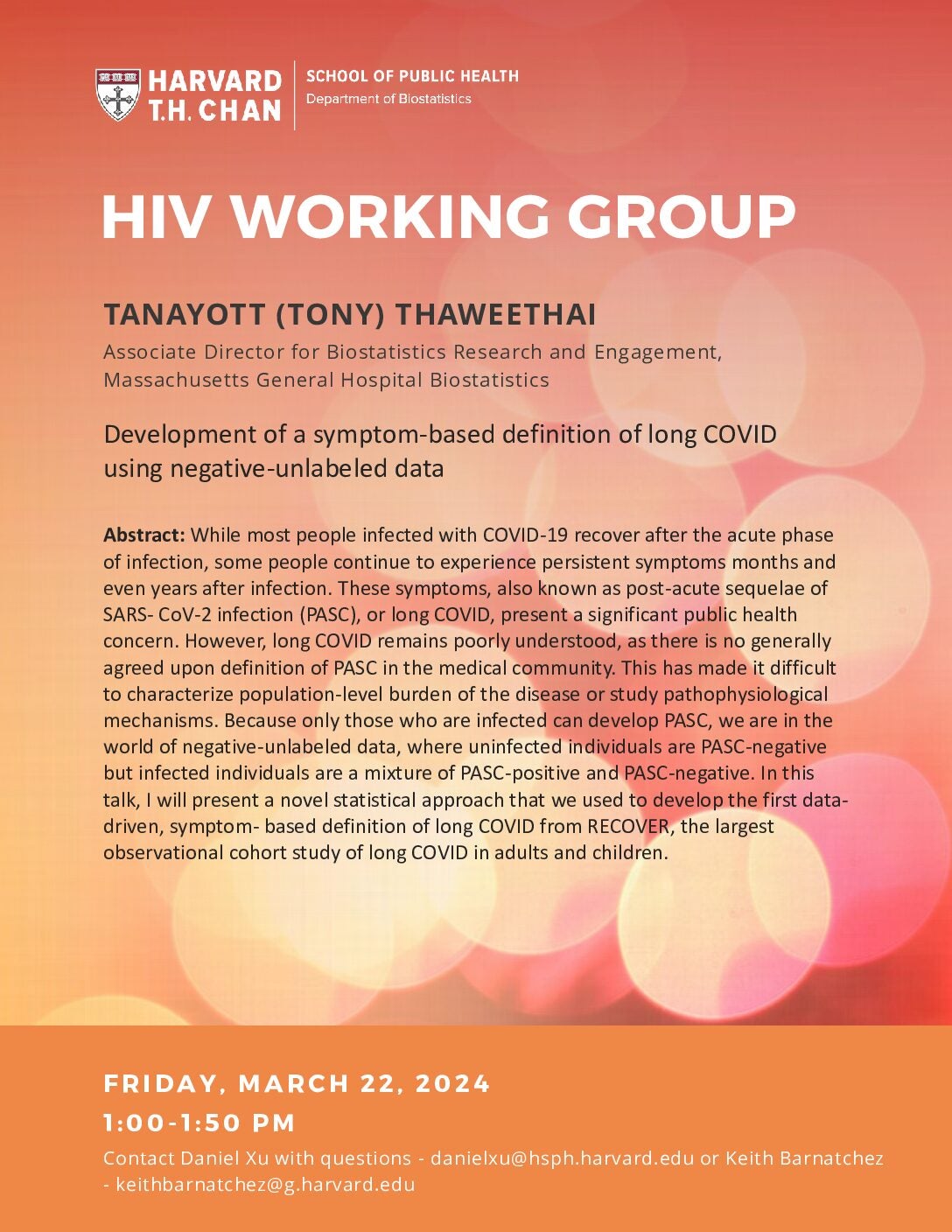Quantitative Issues in Cancer Research Working Group Seminar
Building 2, Room 426Kimberly Greco, PhD Student, Department of Biostatistics, Harvard T.H. Chan School of Public Health Graph Attention Framework to Enhance Rare Disease Sub-Phenotyping from EHR Abstract: Accurately sub-phenotyping patients according to their risk for an adverse clinical outcome can significantly enhance clinical decision-making. Recent advances in patient representation learning have enabled the development of sophisticated clustering...





